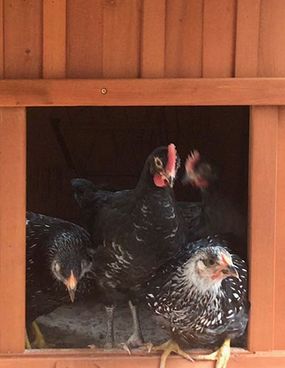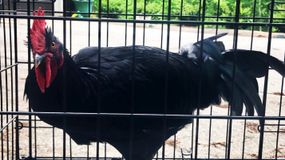Ever found yourself scratching your head trying to figure out what to call that young rooster strutting around your backyard? You’re not alone! Poultry terminology can be confusing, especially when you’re new to raising chickens Let me clear things up for you and explain exactly what a young male chicken is called
The Simple Answer: It’s a Cockerel
A young male chicken is called a cockerel. This term specifically refers to a male chicken under one year of age. Once that same bird reaches its first birthday, it graduates to being called a cock, rooster, or old rooster.
I’ve been raising chickens for years now, and I still remember the confusion when I first started Learning these terms has made communicating with other chicken owners and vets so much easier!
Breaking Down Chicken Terminology by Age and Gender
To help you understand the full picture, here’s a breakdown of chicken terminology based on age and gender:
| Age | Male Term | Female Term | Gender-Neutral Term |
|---|---|---|---|
| Newly hatched | – | – | Chick |
| Under 1 year | Cockerel | Pullet | Juvenile |
| 1 year and older | Cock/Rooster | Hen | – |
This terminology isn’t just for showing off at farmer’s markets—it actually serves a practical purpose! When buying supplies, talking to vets, or communicating with other chicken keepers, using the correct terms ensures everyone’s on the same page.
How to Identify a Cockerel from a Pullet
Telling cockerels apart from pullets (young female chickens) can be tricky, especially when they’re very young Here are some ways to spot the differences
Physical Characteristics
- Comb and wattles: Cockerels typically develop larger, redder combs and wattles earlier than pullets
- Feathers: By about 3 months, cockerels start growing long, pointy saddle feathers in front of their tail, while pullets have rounded ones
- Hackle feathers: These neck feathers become longer and pointier in cockerels
- Legs and feet: Cockerels usually have thicker, stronger legs than pullets of the same age
Behavioral Signs
- Cockerels tend to be rowdier and more vocal
- They often try to establish dominance in the flock even at a young age
- They may stand taller and puff out their chests
- Mock fighting with other cockerels is common behavior
I remember when my first batch of chicks was about 12 weeks old—one little one started standing taller than the rest and making these funny little croaking sounds that weren’t quite crows yet. That was my first clue I had a cockerel on my hands!
Cockerel vs. Rooster: What’s the Difference?
Many folks use these terms interchangeably, but there’s actually a clear distinction:
- Cockerel: Male chicken under 1 year of age
- Rooster/Cock: Male chicken 1 year or older
The differences aren’t just semantic—there are physical changes that happen as a cockerel matures into a rooster:
- The comb and wattles grow larger and brighter
- Legs become thicker and stronger
- Feathers, especially hackle, saddle, and tail feathers, become more developed
- Spurs on the legs grow longer and stronger
- Their crow becomes fuller and more powerful
Think of it like the difference between a teenage boy and a grown man—same individual, different developmental stage.
The Role of Young Male Chickens in a Flock
You might be wondering what purpose a cockerel serves in your flock. While they don’t lay eggs (obviously!), they do have several important roles:
- They will eventually mature into roosters that can fertilize eggs if you want to hatch chicks
- They help maintain order in the flock
- As they mature, they’ll protect hens from predators
- They’ll help find food sources and call hens over when they discover treats
However, because of their eventual crowing and sometimes aggressive behavior, many suburban chicken keepers choose to keep only hens. Local ordinances sometimes restrict or prohibit keeping roosters, so it’s good to know your local laws before raising cockerels.
Frequently Asked Questions About Young Male Chickens
Can you eat a cockerel?
Yes, you can definitely eat cockerels. In fact, many chicken keepers who end up with unwanted cockerels (due to ordinances or flock management) will process them for meat. Their meat tends to be leaner than commercially raised chickens but can be delicious when prepared properly.
When do cockerels start to crow?
Cockerels typically begin attempting to crow between 4-5 months of age, though some precocious ones might start earlier around 2-3 months. The first crows usually sound more like croaks or squeaks before developing into full-fledged rooster crows.
How many cockerels should I keep in my flock?
Unless you have a very large flock with many hens, it’s usually best to keep just one cockerel. Multiple cockerels often fight for dominance, which can lead to injuries and stress in the flock. A good rule of thumb is one cockerel for every 8-10 hens.
Do I need a cockerel for my hens to lay eggs?
Nope! This is a common misconception. Hens will lay eggs regardless of whether there’s a cockerel present. The only difference is that without a cockerel, the eggs won’t be fertilized and therefore won’t develop into chicks if incubated.
At what age does a cockerel become fertile?
Cockerels can become fertile as early as 4-5 months of age, though their fertility improves as they mature. If you’re keeping cockerels and pullets together and don’t want fertilized eggs, you’ll need to separate them before this age.
Other Poultry Terminology Worth Knowing
While we’re on the subject of chicken terminology, here are some other useful terms that might come in handy:
- Bantam: A miniature version of a chicken breed
- Broody: A hen that wants to sit on and hatch eggs
- Capon: A castrated male chicken raised for meat
- Layer Breed: Chicken breeds raised primarily for egg production
- Dual Purpose Breed: Chicken breeds good for both eggs and meat
- Ornamental Breed: Chicken breeds raised primarily for show or exhibition
- Molting: The process of losing and regrowing feathers
- Dust Bath: When chickens bathe in dirt to clean themselves
- Crop: Part of a chicken’s digestive system that stores food
- Grit: Small stones chickens eat to help grind food in their gizzard
Conclusion: The Importance of Knowing Your Chicken Terms
Understanding that a young male chicken is called a cockerel isn’t just about using fancy terminology—it’s about being able to communicate effectively in the world of poultry keeping. Whether you’re talking to a vet, buying supplies, or just chatting with fellow chicken enthusiasts, knowing the right terms makes everything clearer.
Plus, there’s something satisfying about watching your little chicks grow and being able to identify exactly what stage of development they’re in. That fuzzy yellow ball becomes a gangly juvenile, which then transforms into either a pullet or a cockerel, and eventually a hen or rooster.
Do you have any other chicken terminology questions? I’d love to hear them! Drop a comment below and let’s keep the conversation going.
Can Female Chickens Change Sex?
Miss Lucille was a sweet little pullet (young hen), who found a cozy home in the chicken coop of Kristi Allens (not her real name) Powder Springs, Georgia, backyard. Initially, things appeared to be status quo with the young exchequer leghorn cross.
After observing her for a time, however, Allen noticed Miss Lucille was growing a comb. Although both sexes of the breed can have them, Allens instincts told her that perhaps something wasnt quite standard, so she sought the help of a local farmer. Allen recalls:
Advertisement “The farmer did all of the checks to confirm Miss Lucille was a miss. She had no long saddle feathers [pointy feathers at the base of the tail], no aggression, didnt jump or react in the presence of all the hens and roosters, and when she was laid back in the farmers hand, she stuck her legs out straight and just laid there. All are old timers tricks to identifying adult roosters since theres no definitive way to tell until they mount another chicken or crow, aside from lab testing.”
Miss Lucille had “failed” the rooster test. However, later on, Allen arrived home to a mess of feathers in the backyard, an unusual event because female chickens dont usually molt until around 18 months. She also started exhibiting more aggressive behavior.
“She began acting more temperamental, but I attributed that to her molting, as it can be quite uncomfortable for chickens,” she says. “I was worried about her health.”
Although strange things were certainly afoot in Miss Lucilles world, none of them were health-threatening. When her feathers grew back, they were pointed saddle feathers, signaling a transition to an adult male chicken. Her hackles and tail feathers had also undergone some major changes.
“She went from being your typical hen to a rooster with beautiful, long tail feathers and pointy hackles. Her gait changed, and she was definitely at the top of the pecking order,” Allen says.
Further consultation advised a wait-and-see approach. One farmer told her, “Just because she now looked like a rooster didnt mean she was one. I needed to wait until she crowed or mounted one of the hens.”
Ironically, Miss Lucille became more mellow and friendly. “But then her comb kept getting bigger and redder. For every indicator she might still be a she, there was another for her being a he,” she says.
Finally, the irrefutable proof came at around 5 months of age: The rooster literally crowed. “Every day the crow grew louder and stronger. It was official that Miss Lucille was now Mr. Lucille,” Allen says.
“And to his credit, he assumed the role wonderfully. If the girls were low on water, hed crow and let me know to get on it. Hed lead the charge up to roost at night. Hed wake us up with his song early each morning.”
Identifying an Adult Female vs. an Adult Male Chicken
When chicks mature, chicken breeders use a few visual signifiers to distinguish roosters from an adult hen.
The most obvious features between them are the rooster combs and wattles: flaps of skin that indicate high levels of testosterone and may also signal that the rooster is ready to fight off any male rivals. Most breeds of roosters feature a bright red comb for maximum visibility.
Other common indicators are the development of leg muscles and orientation of feathers. As they become ready to lay eggs, most adult female chicken breeds develop thicker legs with short, stubby claws. Meanwhile the same breed of roosters tend to retain long legs with sharp claws on their feet for defense.
Hen feathers tend to be soft and plush all along the body, while the rooster grows coarser, more exaggerated feathers. Hens keep short, rounded hackle feathers for their whole life, while most male chickens develop long and ornate hackle feathers along the ridge of their back.
Then there are the long saddle feathers, which populate the tail area and either point rearward or fan out to make the rooster appear larger to foes.


